What is herpesvirus?
Feline herpes virus type 1 is specific to cats. In fact, most mammals have their own type of herpes virus. These viruses will not infect other species. Feline herpes virus is not contagious to humans but is contagious between cats. The virus is a common respiratory pathogen that causes upper respiratory disease in most cats. As a respiratory disease, the virus is acquired through the air, such as one cat sneezing around another cat. In the environment, the virus is killed by drying and sunlight, but can survive for many hours in a moist, cool environment. Sneezing may or may not be seen. Most often, the cat has a history of conjunctivitis and/or corneal ulcers that will not heal.
Stress is the biggest cause of relapse. Common stress factors for cats include strangers or new animals in the home, moving to a new home, and boarding while the owner is away. Advanced age or a compromised immune system also predisposes to infection.
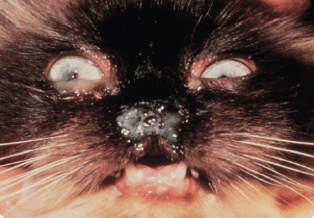
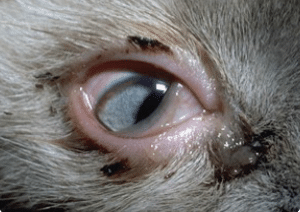
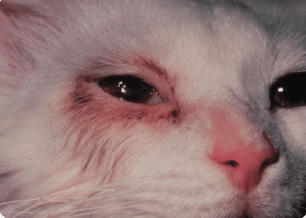
Conjunctivitis
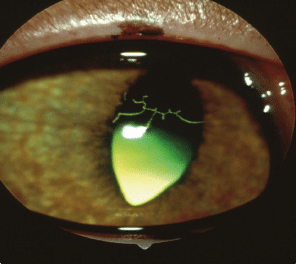

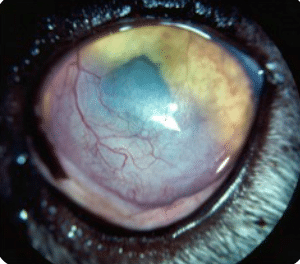
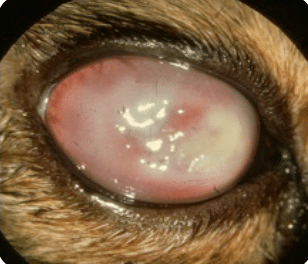
What is the treatment for herpes virus?
Bacteria are living organisms that reproduce on their own. With a bacterial infection, antibiotics are used because they directly impair the reproduction of or directly kill the bacterial organisms. Conversely, viruses are dormant until they invade and take over another cell, in order to reproduce. Antibiotics do not kill body cells and that is why they are useless in the treatment of viral infections. Anti-viral topical and/or systemic medications are indicated in active infections. For mild cases, treatment with topical antiviral medications must often be applied for 2-4 weeks, and for more severe cases, oral and topical medications are administered for 4-6 weeks or longer. A daily oral supplement, L-lysine, may also be recommended to minimize risk of future flare-ups.
What is the long term prognosis?
It is important for the owner to realize that this virus cannot be completely cured or eradicated from the cat, but by reducing stressful situations and treating active infections aggressively, future outbreaks can be reduced or prevented.
Although herpes virus infections are treatable (not curable), they can be quite frustrating because not all cats respond to the medications the same way. Occasionally, medications need to be changed or modified to provide the best results.

